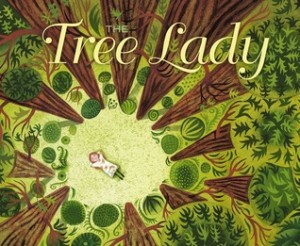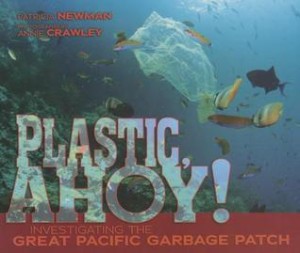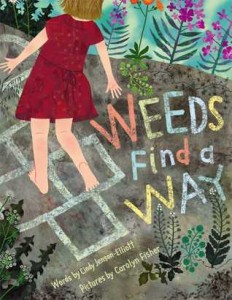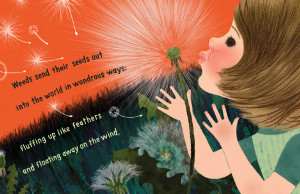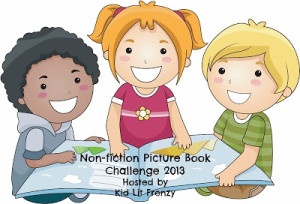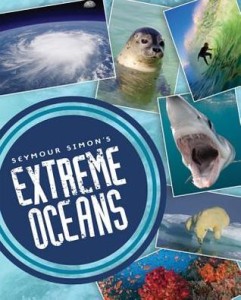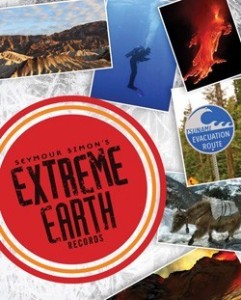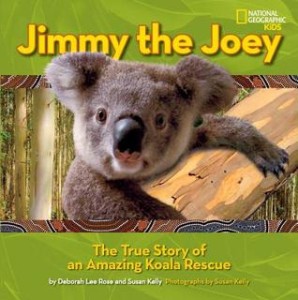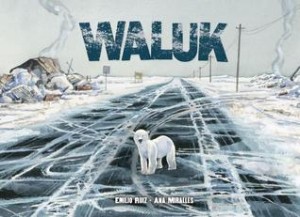Nonfiction Picture Book Wednesday
Nonfiction Picture Book Wednesday is hosted by Kid Lit Frenzy and was started to help promote the reading of nonfiction texts. Most Wednesdays, we will be participating and will review a nonfiction text (though it may not always be a picture book).
Be sure to visit Kid Lit Frenzy and see what other nonfiction books are shared this week!
The Tree Lady: The True Story of How One Tree-Loving Woman Changed a City Forever
Author: H. Joseph Hopkins
Illustrator: Jill McElmurry
Published September 17th, 2013 by Beach Lane Books
Goodreads Summary: Unearth the true story of green-thumbed pioneer and activist Kate Sessions, who helped San Diego grow from a dry desert town into a lush, leafy city known for its gorgeous parks and gardens. Katherine Olivia Sessions never thought she’d live in a place without trees. After all, Kate grew up among the towering pines and redwoods of Northern California. But after becoming the first woman to graduate from the University of California with a degree in science, she took a job as a teacher far south in the dry desert town of San Diego. Where there were almost no trees.
Kate decided that San Diego needed trees more than anything else. So this trailblazing young woman singlehandedly started a massive movement that transformed the town into the green, garden-filled oasis it is today. Now, more than 100 years after Kate first arrived in San Diego, her gorgeous gardens and parks can be found all over the city.
Part fascinating biography, part inspirational story, this moving picture book about following your dreams, using your talents, and staying strong in the face of adversity is sure to resonate with readers young and old.
My Review: This book was fascinating! I love learning about strong woman who changed the course of history and did so when no one thought they could. Like Jane Goodall, Kate Sessions love of nature and learning started at a very young age, and she let this desire to learn drive her to become an amazing woman. She is an inspiration and one that many people probably do not even know about.
Teachers’ Tools for Navigation: I can picture this book being used so many different ways in the classroom! It is perfect just for a read aloud and discussion. It has some beautiful descriptive and figurative language that could be discussed. It could also be read in lit circles where each group gets a different strong female who changed the world and then they could each present and share on their woman. AND it has very unique science facts and information that help it cross seamlessly into science. Just a fantastic book for the classroom.
Discussion Questions: How did Kate change San Diego?; What did Kate do, that others didn’t, to help her transform San Diego?; Why did Kate go to San Diego?; What other women in history does Kate remind you of?
We Flagged: “Kate felt the trees were her friends. She loved the way they reached toward the sky and how their branches stretched wide to catch the light. Trees seemed to Kate like giant umbrellas that sheltered her and the animals, birds, and plants that lived in the forest.” (p. 7)
Read This If You Loved: Me…Jane by Patrick McDonnell, Who Says Women Can’t Be Doctors? by Tanya Lee Stone, Daredevil by Meghan McCarthy, The Boy Who Loved Math by Deborah Heiligman, Brave Girl by Michelle Markel, Primates by Jim Ottaviani, Look Up! by Annette LeBlanc Cate, Players in Pigtails by Shana Corey
Recommended For:

